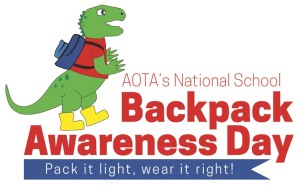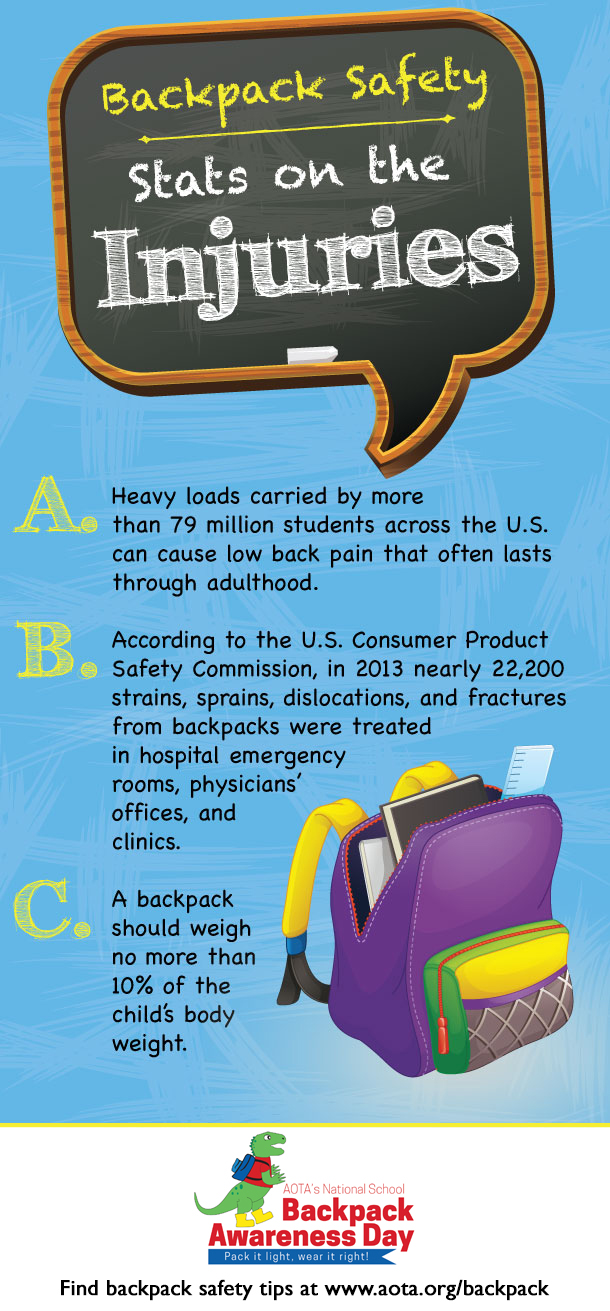“A child wearing a backpack incorrectly or that is too heavy can be contributing risk factors for discomfort, fatigue, muscle soreness, and musculoskeletal pain, especially in the lower back,” says Karen Jacobs, EdD, OTR/L, CPE, clinical professor of occupational therapy at Boston University.
Every student has one – from pre-schoolers to teens in High School, students are carrying backpacks containing not only books and binders but also lunches, athletic gear, extra clothing and maybe even a tablet or laptop computer. All that adds up and that extra weight, and perhaps an ill-fitted or poorly constructed backpack, can lead to injuries that can lead to chronic pain as an adult. In 2010 nearly 28,000 strains, sprains, dislocations, and fractures from backpacks were treated in hospital emergency rooms, physicians’ offices, and clinics.
It is estimated that about 55% of students carry a backpack that is heavier than the recommended guideline of 10% of the student’s total body weight. In a study on the effect of backpack education on student behavior and health, nearly 8 out of 10 middle school students who changed how they loaded and wore their backpacks reported less pain and strain in their backs, necks, and shoulders.
Wednesday, September 16, 2015 is AOTA’s National School Backpack Awareness Day. Take a few minutes with your child to learn more about the ways you can prevent backpack related pain and injuries, by visiting the links below.
Backpack Facts: What’s All the Flap About?
The American Occupational Therapy Association (AOTA) has put together an informative overview of how to pack, carry, adjust and lift a backpack that parents and students can use to help prevent pain and injury.
The 1,2,3’s of Basic Backpack Wearing


